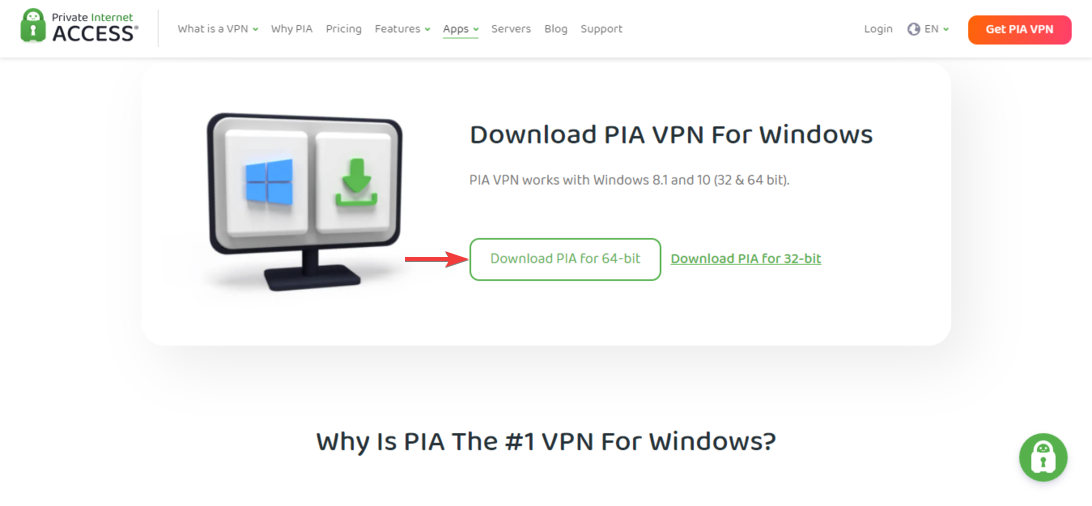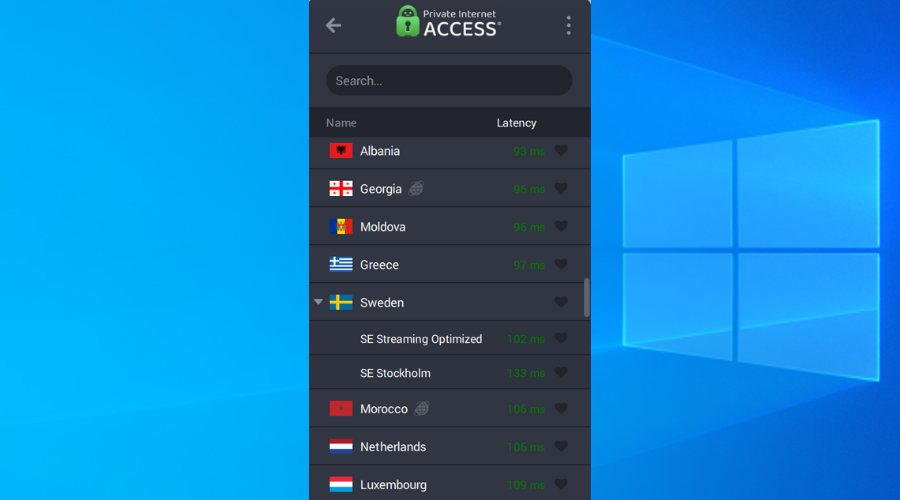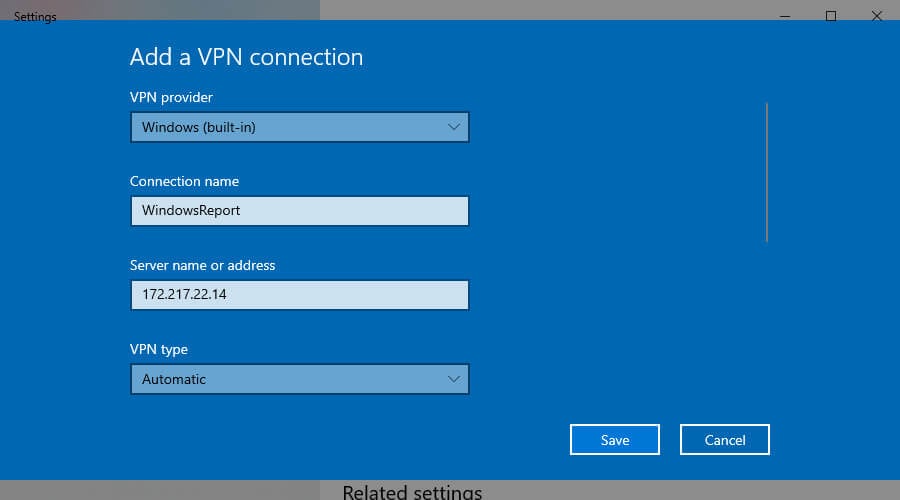Does Windows 10 Have a VPN? Full Report on the Windows VPN
Windows 10 VPN works fine but premium software will offer better privacy
- Windows 10 has its own VPN provider that you can use to create VPN profiles for more security.
- So it's possible to connect to your Windows VPN and remotely access a PC over the Internet.
- Find out how to create a profile and connect to a VPN on your own computer using this guide.
- You can discover the differences between the Windows 10 VPN provider and a third-party solution.

More and more people are understanding the importance of securing their digital identity and computer network as soon as they boot Windows and get online.
It’s why many users are turning to VPN software solutions. Still, many are wondering if Windows 10 has a built-in VPN so that they won’t have to install anything extra.
Does Windows 10 have a VPN?
Yes, Windows 10 does have a VPN that you can configure to secure your Internet connection and remotely connect to another PC.
A lot of people expect it to be horrible, but it’s not. Still, it doesn’t necessarily mean you should use it. It depends on what you want to do once you’re connected to the virtual private network.
However, to get the most out of your VPN connection, we recommend opting for a premium VPN solution, such as Private Internet Access (more on this later).
Is Windows 10 VPN any good?
The Windows 10 VPN is a good option if you want to connect to the workplace through an encrypted VPN.
You can also get the connection details from commercial VPN services and connect through the Windows 10 VPN instead of installing a native app.
But it’s harder to change VPN server locations when using the Windows 10 integrated VPN.
On top of that, you can’t take advantage of advanced features like port forwarding or split tunneling.
Is premium VPN a better alternative?
Simply put, yes. PIA supports multiple VPN protocols and encryption modes to secure your Internet connection and bypass any firewall.
It even has the OpenVPN and WireGuard protocols, which aren’t covered by the Windows 10 features.
Furthermore, PIA can protect your VPN connections with exclusive DNS servers. It provides unlimited bandwidth, native port forwarding, split-tunneling mode, and a kill switch.
There’s also an exclusive ad blocker called PIA MACE, which defends your web browsers from phishing and other dangers.
Besides, you can still set up a VPN connection securely using the Windows 10 built-in VPN provider and PIA’s connection details if you prefer this option without having to rely on the desktop client.
For example, you can set up an IPsec VPN client in Windows 10 using PIA. But you won’t be able to access all its features.
What else you should know about PIA:
- +3,300 VPN servers in 48 countries
- 10 simultaneous connections
- Compatible with Windows, macOS, Linux, Android, iOS, Chrome, Firefox, Opera
- Full privacy, no logs or leaks
- 24/7 live chat support
- 30-day money-back guarantee (no free trial)

Private Internet Access
Consider this premium VPN to secure your Internet traffic and access blocked websites.How to set up PIA VPN on Windows 10
- Download PIA software on your Windows 10 PC.
- Click on the installer to run the installation process.
- After this, open PIA interface from your Windows taskbar.
- Search for other VPN servers in the list.
- Connect to another IP address and navigate on the web.
Basically, this is the most efficient method to secure your online activities with advanced VPN tools for enhanced privacy on your PC, compared with free VPN support.
Where is VPN on Windows 10?
- Right-click the Start button in Windows 10.
- Click Network Connections.
- At Network & Internet, select VPN.
This is the place where you can add and remove VPN connections, edit connection properties, set the network profile to public or private, apply proxy settings to the VPN connection, or clear sign-in info.
It’s also possible to configure advanced options like turning off your VPN while roaming or over metered networks. What’s more, you can create multiple VPN profiles with distinct settings.
Unfortunately, Microsoft hasn’t integrated an option for exporting VPN settings on Windows 10. But you can still do it with a simple workaround that involves a copy-and-paste operation.
What type of VPN does Windows 10 use?
Windows 10 supports the PPTP, L2TP/IPsec, SSTP, and IKEv2 protocols. If you’re hoping for OpenVPN, you have to separately install the OpenVPN client.
And, if you want to try the new WireGuard protocol, you have to use a VPN client with WireGuard support, such as Private Internet Access (buy here).
Is the Windows 10 VPN free?
Yes, the Windows 10 VPN is completely free to use.
However, you still need to get VPN connection details from somewhere else, since the built-in VPN provider of Windows 10 acts only as a client.
How do I connect to a VPN on Windows 10?
- Press the Start button, type VPN settings, and press Enter.
- Click Add a VPN connection.
- Enter the VPN connection details and click Save.
- Select the VPN connection and click Connect.
Using the Windows 10 built-in VPN provider, you can create a VPN connection using the PPTP, L2TP/IPsec with a certificate or pre-shared key, SSTP, or IKEv2 protocols.
Depending on the authentication type, you can sign in with a username and password, smart card, one-time password, or certificate.
Once you specify these details along with the server name or address, you can save the VPN profile, add the VPN connection, and quickly connect to it.
It doesn’t matter which device you use, as long as you’re running Windows 10. For example, you can connect your laptop to a VPN the same way.
To easily connect to the VPN on your PC, learn how to create a VPN shortcut.
Windows 10 built-in VPN provider vs premium VPN solution
If you want to access files through a VPN, then you can use the Windows 10 built-in VPN provider without having to install any additional software.
It requires a bit of tinkering because you have to set up a VPN between two computers and access the router administration panel to forward ports.
Nevertheless, it’s a free solution for remotely accessing a computer across the Internet in order to view, edit, copy, and delete files.
You can even map network drives through a VPN so that you can effortlessly access them in your file browser.
However, if you want to use a VPN to hide your IP address, spoof your location, unblock streaming services, and get the best out of the Internet, then you need a premium VPN service like Private Internet Access.
An overview of the Windows 10 VPN
In conclusion, you can use the Windows 10 built-in VPN provider to set up a VPN connection and remotely access another PC.
However, it can’t compare to a premium VPN server like PIA, which grants you total Internet freedom, online security and privacy, site unblocking, and more cool features.
All said here, join our Windows 10 section to see what else you can do with Microsoft’s operating system. To master your VPN and take full advantage of it, feel free to explore our VPN Hub.












